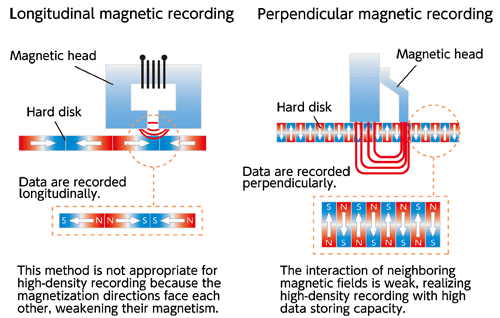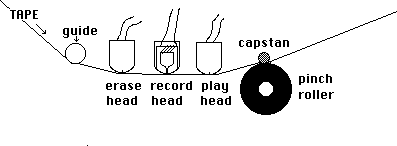Memory Storage Devices
--Lee Dong Hyun dlee682 (talk) 19:06, 5 December 2015 (EST)
Magnetic storage devices use the method of magnetic recording to preserve data.
Magnetic recording
Magnetic recording is a process where portions of a magnetic material are selectively magnetized with the use of electrical signals. The first use of this kind of technique was introduced by a Danish engineer Valdemar Poulsen in 1900. He created a machine called telegraphone that allowed him to record speech magnetically on a steel wire, and this became the start of many storage devices that are existent today.
How it works
The main physics behind magnetic recording involves specific patterns of magnetization on a track which corresponds to specific signals to be stored. The signals triggers the magnetization of the material as it passes through the recording device, and the remnants of the magnetization are the codes which become the basis of the storage of the data. To retrieve the data stored, the reverse process happens: the magnetization is detected by the reader which reproduces the signal that initially triggered the magnetization. The two earliest versions of this recording were longitudinal recording and perpendicular recording.

Recording methods
Analog Recording
Analog recording was the most popular method used when tapes were the most prevalent recording devices. The tape would run at a constant speed, and the writing head magnetizes the tape in response to the signals required to record a particular piece of data. Once a magnetization distribution is completed to store the relevant data, this distribution can be read out to replay the original signal which triggered the magnetization. The commonly used magnetic particles for this method are Iron oxide particles or Chromium oxide.
Digital Recording
Digital recording can be considered a more advanced method of recording, as instead of creating a magnetization distribution, digital recording makes use of magnetic states. The method involves the usage of two stable magnetic states, which are the +Ms and the -Ms on a hysteresis loop. This is a technique which is used to create devices such as floppy disks and the currently popular hard disk drives.

